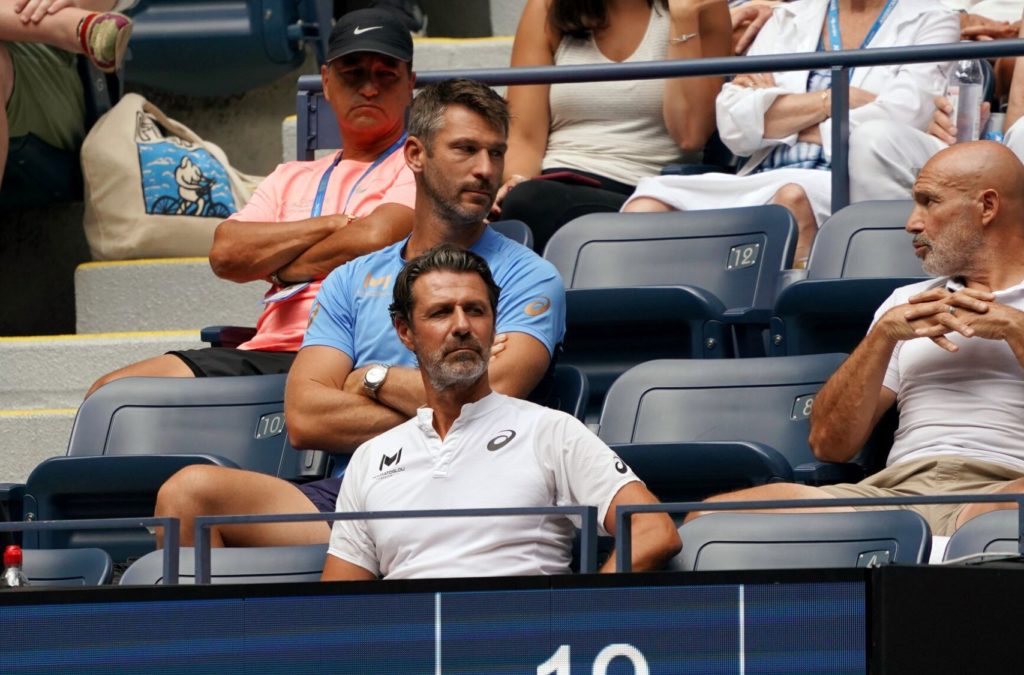
photo : espn
A few weeks ago, the ATP announced they would be trialing off-court coaching following Wimbledon. This trial begins this week at two ATP 250 events in Newport and Bastad and will be in effect at all ATP tour events through the end of the 2022 season as well as the US Open and the Nitto ATP Finals.
Coaching has been a highly debated topic in tennis. Patrick Mouratoglou has been the most outspoken coach in favor of allowing it. Many remember the US Open final where Serena Williams was punished for a hand signal from Mouratoglou.
He admitted he was in fact coaching, but he took issue with the violation. His stance is that coaching occurs all the time and said he himself coaches during every match but had never received a violation. Mouratoglou makes a compelling argument.
Chair umpires have a difficult job when it comes to policing coaching. There are no rules against encouragement or cheering for your player. Where is the line between encouragement and advice? Tennis is also an international sport with dozens of different languages being spoken, often an umpire is unaware of coaching in a language they don’t know. Umpires also have a responsibility not to personally influence the outcome of a match. How that responsibility is balanced with applying code violations differs between umpires.
Perhaps it would be easier to simply allow coaching if it happens every match anyway. Easy does not mean right though. Plenty of players and coaches enjoy and want to uphold the tradition unique to tennis. One of those players being Nick Kyrgios who responded to Mouratoglou congratulating the ATP for implementing this trial.
Kyrgios makes a compelling case as well. In a recent press conference, Bianca Andreescu cleverly noted that there are no timeouts in tennis, and you are all alone out there. This can be difficult mentally and emotionally for players. In basketball, if one team scores 10 straight points a coach will call a timeout. In tennis, if a player loses 10 points in a row, they have no reprieve.
A timeout or pep talk can completely change the momentum and outcome of a game or match. Tennis players have been compared to boxers or warriors battling one another on the court mano a mano.
The current coaching policy being implemented is somewhat of a mix of the two. The policy allows “off-court” coaching meaning it’s only allowed from the seats with verbal cues only permitted when the player is on the same side of the court. There are still no timeouts or on-court pep talks.
Is this version of compromise something that will eventually make its way into the rulebook? It could be the opening to allowing all forms of coaching or the trial could fail, and the ATP go back to not allowing coaching.
Other forms of coaching have been trialed by tennis associations in the past. There’s been headsets, on-court coaching between sets, off-court coaching, no coaching, and more. Currently, the WTA has in their rule books a version of on-court coaching allowed at all WTA tournaments. There are benefits and flaws to all different coaching rules.
The benefits and flaws aren’t limited to players and coaches. Many fans would jump at the chance to get inside the mind of a coach. Media members have postulated the idea of live mics where coaching can be heard and understood by viewers on television. On the flip side, there are fans who respect the historical traditions.
There is no consensus among coaches, players, and fans about the best policy. For the most part, this debate has been a friendly one and it will be interesting to see how this trial unfolds. The National Bank Open and Omnium Banque Nationale will display the different WTA and ATP coaching rules. Go visit the tournaments and get an in-person look at how they work and decide for yourself.


